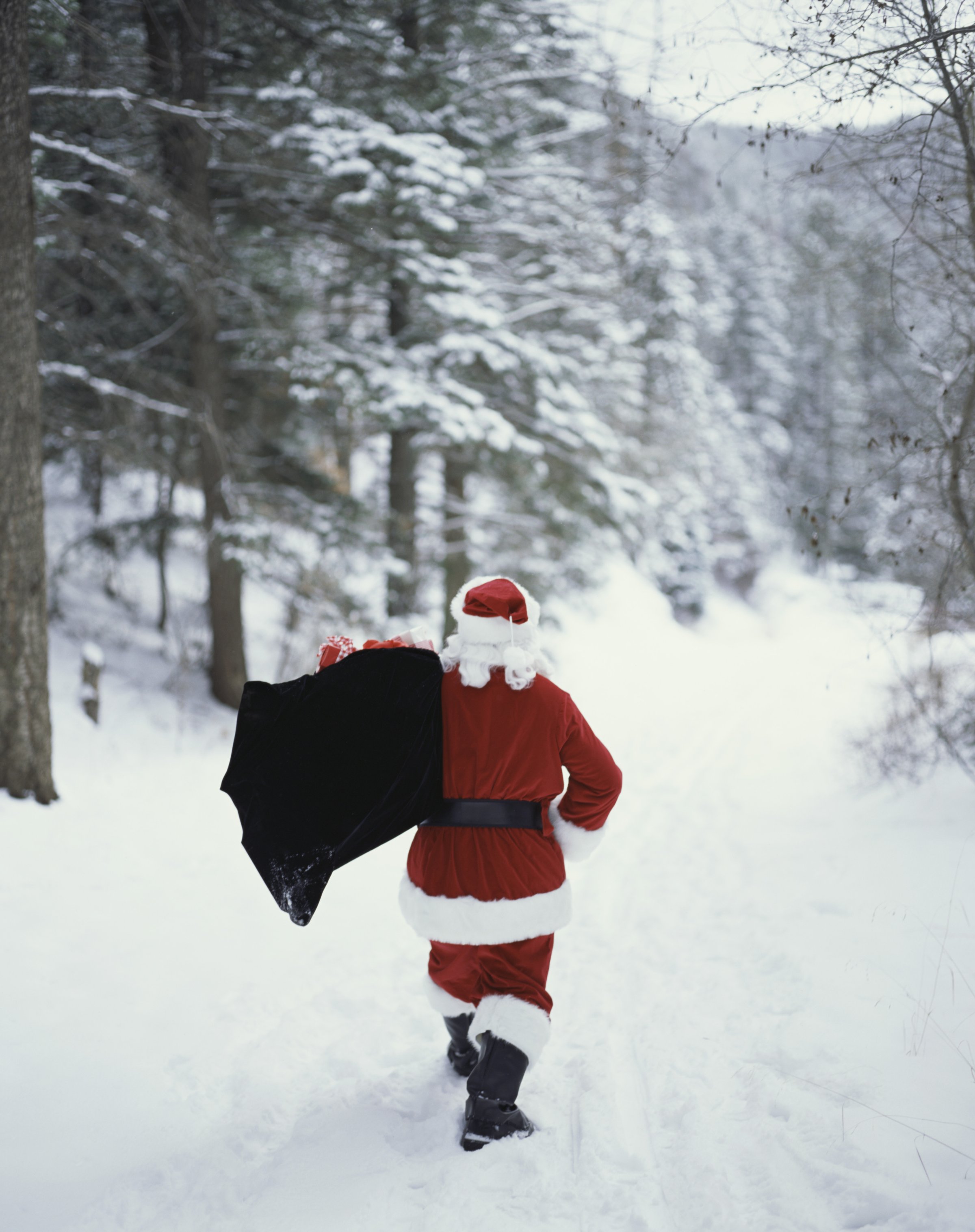
Zócalo Public Square is a magazine of ideas from Arizona State University Knowledge Enterprise.
In my neighborhood, everyone gets a chance to live with Santa.
Östanfors — an old miners’ district in our town of Falun, Sweden — has a longstanding tradition of moving Old Saint Nick from house to house each day in December, so every family has a chance to “host” him. This means creating an elaborate Christmas-themed display in your front window. During this public advent calendar, figurines of Santa and other seasonal characters like angels and reindeer find themselves in cotton-ball saunas, mock elections, even surrounded by festive guinea pigs. Host families open their doors on their special day to invite in friends, neighbors, and strangers for food and drink.
The intimacy of this ritual makes this one of my favorite times of the year. But out beyond Östanfors, it’s hard to ignore other places that claim to host Santa. Countries around the world have clamored to fête themselves as the true home of Kris Kringle, so that they can steal a spot in the global cultural spotlight—and attract tourists. I can’t help but think that, in trying to pin down Santa in real life, a bit of the magic is lost in the process.
For centuries, Santa’s whereabouts were as unclear as they were legendary — somewhere in the North Pole. The mystery allowed countries to diversify his identity; Santa could look and act however different cultures wanted him to. He appeared as a black man in Amsterdam, a benevolent bishop in Munich, a pagan winter gnome in Finland’s Lapland. In Switzerland, where I was born, he visited homes every year on December 6, followed by a menacing figure called “Schmutzli” (the Swiss version of Krampus). There was little tension between these beliefs, because they existed so far apart from each other.
But today, it’s difficult for things to be so distinct. The Scandinavian-American artist Haddon Sundblom’s 1920s illustrations of a corpulent, jolly Santa drinking Coca-Cola pulled together pre-Christian winter traditions and the Catholic legend of a famous bishop and launched a global template for Saint Nick, which now even reaches predominantly Muslim countries. I recently discovered 50-some portly Santa figures in a hotel lobby in Egypt.
Nordic countries, given Santa’s rising familiarity and their proximity to the North Pole, have been especially aggressive in claiming Santa. In the 1960s, Denmark launched the ongoing Scandinavian battle over Santa’s true home by moving it from the North Pole down to Nuuk, Greenland’s capital city, to promote tourism on the sparsely populated island. A gigantic mailbox was put up, inviting children from across the world to send their wish list to “Santa Claus, 2412 Nuuk, Greenland.” Soon employees of the Greenlandic postal service began answering the more than 100,000 letters the box receives every December. But as Greenland has become a quasi-independent state, local authorities cut all subsidies for this invention by their former colonial power. The consequence: last year more than half of the letters to Santa never got a response.
Norway created its own famous destination of letters: the “Julehus” (Christmas Home), in the village of Drobaek, just south of Oslo. Today, the house, now a museum, displays more than 250,000 such letters from across the world. However, most children no longer know what a real stamp is, but incoming wish lists have become rare, leaving the Norwegian Santa mostly unemployed.
Not wanting to be left out, the Swedes and Finns have invested in Christmas infrastructures. Not far from my town in Sweden, a city called Mora decided in the 1980s to establish “Santa Town” (Tomteland), a small village on the shores of Lake Siljan. Here, too, the strains of reality on fiction are visible — a nearby failing ski resort has become the home of several hundred Syrian refugees.
Finland built an underground Santa cavern in 1998 near the city of Rovaniemi, on the Artic Circle. The “Santa Park” has everything from traditional Santa buildings to wild amusement park rides. It’s situated a few kilometers away from Rovaniemi International Airport—the “Official Santa Claus Airport.” But recently, warmer weather has ruined its sleigh rides, and the European economic crisis has kept visitors away.
Given all the holes that reality is poking in these fairytales, maybe countries should give up the idea of owning Santa. Maybe it’s time to go back to a “democratic” Santa, for and by the people, whose story can be told in any way people imagine. Or maybe we should just think of Santa as existing, like the Internet, everywhere and nowhere. There should be little need for reality to change that narrative.
Bruno Kaufmann is the editor of People2Power, a Global Democracy Media Initiative hosted by the Swiss Broadcasting Corporation. He wrote this for Zocalo Public Square
More Must-Reads from TIME
- Cybersecurity Experts Are Sounding the Alarm on DOGE
- Meet the 2025 Women of the Year
- The Harsh Truth About Disability Inclusion
- Why Do More Young Adults Have Cancer?
- Colman Domingo Leads With Radical Love
- How to Get Better at Doing Things Alone
- Michelle Zauner Stares Down the Darkness
Contact us at letters@time.com